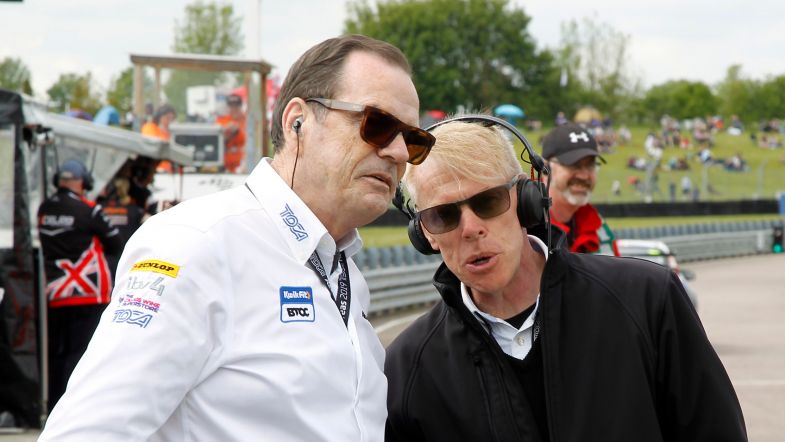Alan Gow: “We had to be reactive with hybrid move”
Series chief executive Alan Gow says it is important for the British Touring Car Championship to be reactive to change in the automotive industry after further details were revealed on the hybrid systems that will come into the series in 2022.
Cosworth Electronics was named as the company that will design, supply and service the new hybrid systems after a tender process came to an end over the course of the summer break.
The hybrid technology will be used to replace the existing system of success ballast, with drivers able to use a steering wheel mounted button to engage additional power that can be used in an attempt to both defend and attack over the course of a race.
Exactly how the system will operate will be determined during testing and simulations ahead of it being introduced into competition, with a number of other championships set to keep a keen eye on how the development process pans out.
Organisers of the Supercars Championship are already in contact with the BTCC in regards to hybrid technology, whilst it could also be introduced into the DTM in the coming years.
“You can’t ignore what is happening in the world around us, and cars on the road are becoming more electrified – not necessarily in terms of full electrification, but certainly in terms of hybrids,” Gow told TouringCarTimes. “It is important to remain relevant to the world around you, otherwise you end up becoming a dinosaur and then you become extinct.
“The BTCC has always been a series that leads from the front, and I’m proud of the fact that we were the first touring car series to announce plans to go with hybrid technology and react to what to what is happening in the automotive world. Since then, the DTM have said they will look at hybrids, we’re already in contact with Supercars and even other series like IndyCar have said they are looking at it.
“I’m not pretending that they are all just following us, but we have always been a series that is proactive [in racing terms], rather than reactive [to others].”
The system that will be developed for the BTCC will effectively ‘bolt on’ to existing NGTC-spec cars which, in theory, means the same system could then be introduced with relative ease into cars running to different technical regulations elsewhere.
“That’s partly why Cosworth wanted to do it as it opens doors for them; having the experience of working on our system,” Gow continued. “Cosworth are a fantastic company and we have dealt with them as a technical partner for the last two decades so we know each other well. It’s an important contact for them, and I’m sure they’ll do a great job and throw their weight behind it to make it work.
“One thing that we need to get over with this move is that it won’t be like F1 when they went to hybrids, and the cars went quiet and weren’t as exciting. That isn’t what we are doing. The exhaust will still sound the same and the performance of the cars will be the same; there will just be bit extra for drivers to play with.
“It’s not just ‘push to pass’ that will make it unfair. Drivers will be able to use it to defend as well as attack and we have thought about it long and hard to come up with a concept that I feel people around the world could then take up.”
The announcement that Cosworth had secured the contract included confirmation that the technology will not be introduced until the originally announced date of 2022, despite suggestions it could come in a year earlier.
“When we announced it, it was for 2022 but I got a bit greedy and challenged those who were involved with the tender to see if they could do it earlier,” Gow said. “Those on the shortlist said they could, but you always prefer to cover everything off because you don’t want to be developing and testing something new in public.
“I asked the teams if they wanted to bring it in for 2021 or stick with 2022 and to be fair, there was only vote in it. For once, I decided to err on the side of caution and 2022 it is.”










